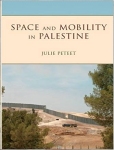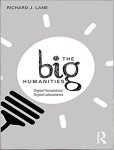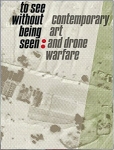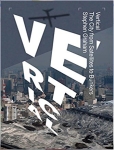
| First Semester 2017-2018 |
| Title |
Space and mobility in Palestine
|

|
| Author | Julie Marie Peteet | |
| Call Number | DS113.6.P48 2017 | |
|
Professor Julie Peteet believes that the concept of mobility is key to understanding how place and space act as forms of power, identity, and meaning among Palestinians in Israel today. In Space and Mobility in Palestine, she investigates how Israeli policies of closure and separation influence Palestinian concerns about constructing identity, the ability to give meaning to place, and how Palestinians comprehend, experience, narrate, and respond to Israeli settler-colonialism. Peteet’s work sheds new light on everyday life in the Occupied Territories and helps explain why regional peace may be difficult to achieve in the foreseeable future.
|
||
| Title |
The big humanities : digital humanities/digital laboratories
|

|
| Author |
Richard J. Lane
|
|
| Call Number | AZ186.L36 2017 | |
|
This book provides an accessible introduction to, and overview of, the digital humanities, one of the fastest growing areas of literary studies. Lane takes a unique approach by focusing on the technologies and the new environment in which the digital humanities largely takes place: the digital laboratory. The book provides a brief history of DH, explores and explains the methodologies of past and current DH projects, and offers resources such as detailed case studies and bibliographies.
The volume highlights the profound transformation of literary studies that is underway, one in which the adoption of powerful technology – and concomitantly being situated within a laboratory environment – is leading to an important re-engagement in the arts and humanities, and a renewed understanding of literary studies in the digital age, as well as a return to large-scale financial investment in humanistic research. |
||
| Title |
To see without being seen : contemporary art and drone warfare
|

|
| Author |
Svea Braunert
|
|
| Call Number | NX650.W3B73 2016 | |
|
This volume, the catalog for a recent exhibition at the Mildred Lane Kemper Art Museum, reveals the unique potential of art to further our understanding of, and give visual form to, modern drone warfare and digital surveillance. These essays illuminate how the drone embodies a far-reaching discussion about the rapidly shifting conditions of perception—of seeing, and of being seen—made possible by advanced technology. What is the relation of machine vision to human vision? And how do visual technologies affect our understanding of the agency of images, and of ourselves?
|
||
| Title |
Vertical : the city from satellites to bunkers
|

|
| Author |
Stephen Graham
|
|
| Call Number | HT371.G69 2016 | |
|
Starting at the edge of earth’s atmosphere and, in a series of riveting studies, descending through each layer, Graham explores the world of drones, the city from the viewpoint of an aerial bomber, the design of sidewalks and the hidden depths of underground bunkers. He asks: why was Dubai built to be seen from Google Earth? How do the super-rich in S?o Paulo live in their penthouses far above the street? Why do London billionaires build vast subterranean basements? And how do the technology of elevators and subversive urban explorers shape life on the surface and subsurface of the earth?
|
||